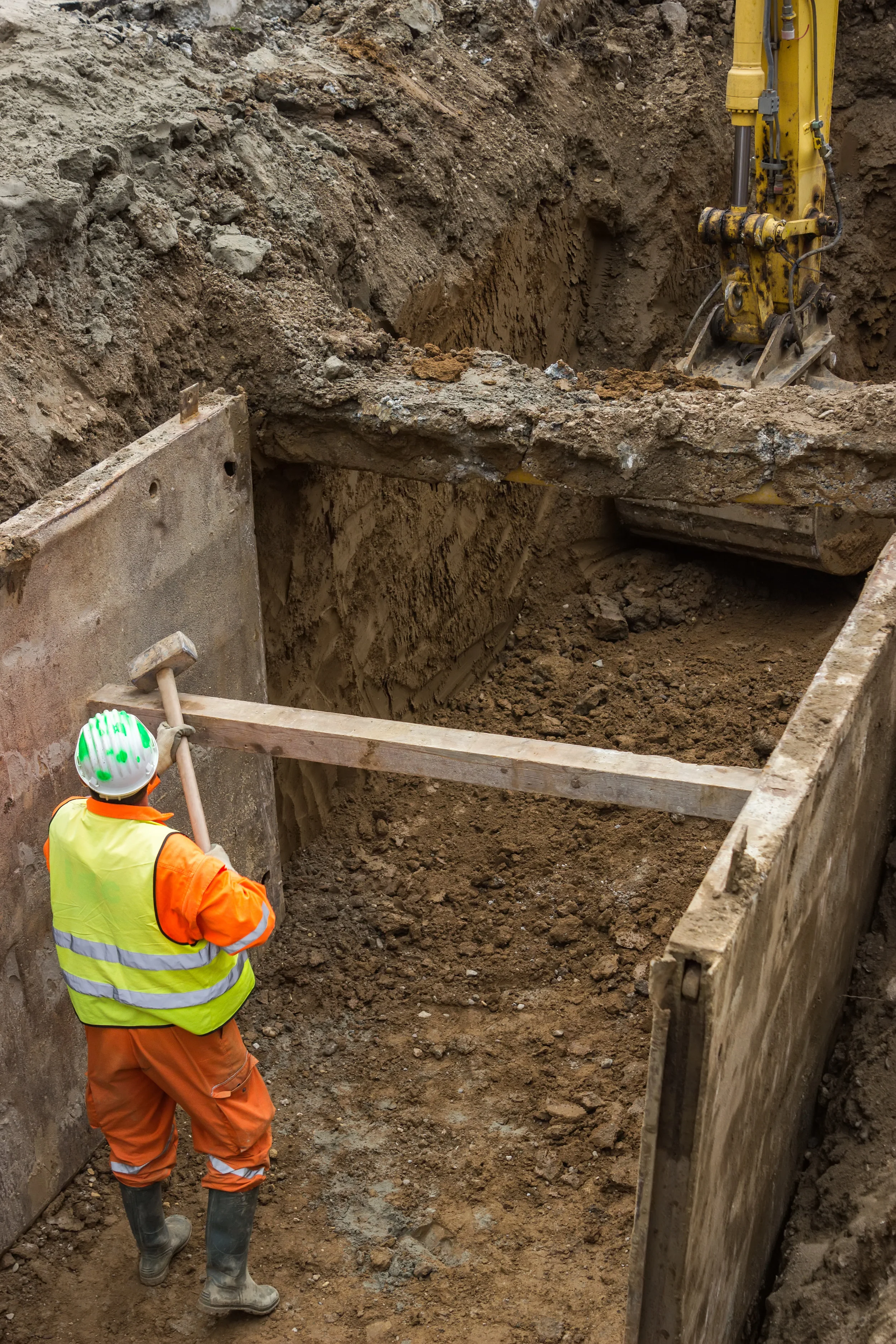A dispatch call for a trench emergency rescue is not common for EMS and fire departments. But when a call like this comes, is your department prepared to respond to a trench rescue incident? Are your providers trained in what to do? This article provides some awareness-level information for responding to a technical rescue in a trench.
While trench rescues may not be common, trenches in municipal public works are. Often at construction sites, trenches are dug for workers to install or repair underground utilities, including water pipes, sewer pipes, and electric lines. These types of trenches are often narrow and deep, descending anywhere from four to 20- plus feet. These excavations differ from other trenches that are wide and deep, often used for repairs of streets, gas lines, or water main repairs. At times workers operating in excavations will be using a protective trench box or shoring.
If an emergency occurs in a trench, it could be a cave-in or a non-cave-in situation. Cave-ins are generally due to changing weather conditions, machinery, or vibrations that cause the walls to collapse, or removed dirt from the spoil pile falling back into the trench. A non-cave-in situation may be a medical emergency in the trench, entrapment of a worker under a pipe or machinery, flooding, or equipment failure.
It is crucial that first-arriving emergency units establish command, contain the incident, and request the appropriate resources. To establish command, follow your written “incident command guidelines.”
· Notify dispatch
· Size up the situation and determine if it is a cave-in or non-cave-in
· Determine the number and types of victims
· Determine the nature of the emergency
· Determine the hazards on the scene (utilities, weather, water, hazmat, machinery)
· Determine the approximate depth of the trench
· Determine if it is a rescue or recovery operation
· Establish “hot, warm, and cold” zones (hot= only trained rescuers, warm= trained support staff, and cold = non-trained personnel are not allowed within a 10-foot radius around the trench)
· Make sure no first responders endanger themselves by urging them not to play hero and enter the “hot” zone without the proper training and technical equipment
· Establish a staging area for equipment and personnel coming to the scene
A trench rescue incident requires a technical rescue team. A minimum of 20-30 rescue technicians are needed for the operation. Since most municipalities don’t have the personnel or the training to perform a trench rescue, it is much more feasible to thoroughly and effectively plan out your trenching jobs and use the appropriate techniques to protect your workers prior to sending them into a trenching situation.
Specialized equipment will need to be brought in by rescue teams, such as airbags, struts, shoring, hand tools, buckets, ladders, ground pads or plywood to stabilize the area around the trench, ropes and rigging, generators, and lighting. For extended incidents consider additional resources such as food, water, and warming equipment for rescuers. Rescues are not generally done in a few minutes. Often they take hours and many times result in a recovery rather than a rescue.
Two feet of soil covering a victim can be the equivalent of 600-1000 pounds on their body. Clearly, crushing and airway compromises are strong possibilities. Once an EMS can assess a victim, the following should be treatment priorities:
· Airway access and control
· Oxygenation
· Maintain body temperature
· Intravenous access before removal of victim
· Head, eye, and ear protection
· Pain management
· Fracture management and immobilization
It is highly recommended that all responders take a trench rescue awareness and operation course that meets NFPA standards. While trench rescues are rare, they are technical operations requiring a great deal of personnel, resources, and logistics. The best way to prevent a trench rescue situation is to follow strict safety procedures in setting up your municipal trenching and excavation situations before you put workers at risk in the trenches!


